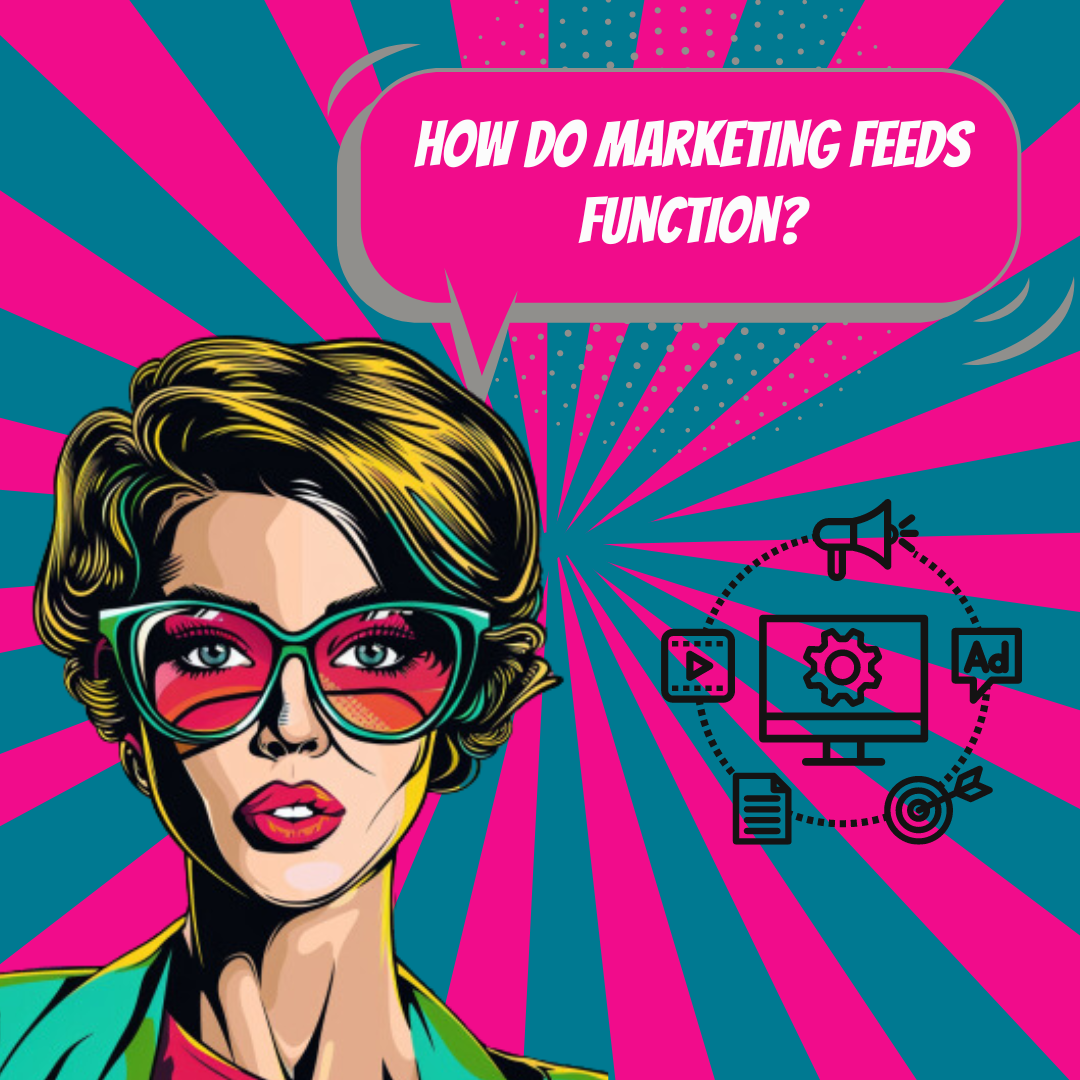Key Takeaways
✅ Feeds are a strategic tool for delivering consistent and personalized content updates to a dedicated user base, enhancing brand visibility and customer engagement.
✅ RSS and email notifications are among the most widely used feeds, fostering a direct line of communication between businesses and their audiences, which facilitates loyalty and repeat engagement.
✅ Best practices in feed utilization include producing high-quality content, personalizing the subscriber experience, keeping content fresh with regular updates, and integrating feeds within a broader multi-channel marketing approach.

Introduction
Are you ready to revolutionize your marketing approach and connect with your audience like never before? Feeds in marketing, which encompass everything from the latest RSS trends to targeted email updates, are your ticket to staying ahead of the curve. Imagine reaching out to your customers with the content they crave, precisely when they want it.
In this insightful article, we'll uncover the secrets of utilizing marketing feeds effectively, showcasing how they can catapult your brand's presence, skyrocket user engagement, and transform casual browsers into devoted subscribers. Join us on this journey as we unlock the power of feeds in marketing, and get ready to witness a dramatic shift in how you interact with your prospective clients.
What are Feeds in Marketing?
Feed content that includes images and videos is often more effective at grabbing your target audience's attention in your market.
Feeds in marketing are automated content delivery systems that allow users to receive updates from their favorite websites or digital platforms. These updates may include articles, blog posts, product listings, or any other type of content that a website chooses to distribute. By using feeds, marketers can connect with their audience by continuously delivering fresh and appealing content directly to those who have shown interest.

RSS Feeds
According to a report by BusinessWire, 40% of millennials have bought something directly from a brand's social media post.
RSS Feeds or 'Rich Site Summary' feeds are a type of web feed which allow users and software to access updates to online content in a standardized, computer-readable format. Marketers using RSS feeds can ensure their subscribers are always informed about the latest content, initiating opportunities for increased engagement and potential conversions.
Benefits for marketers:
- Enables automated syndication of new content, saving time and resources.
- Feeds deliver content directly to the audience without the clutter of advertisements.
- Subscribers receive timely updates, raising the chances of a faster response to new offerings.
Email Feeds
Feed content can also help you build relationships with customers and followers. In the context of email marketing, feeds represent the process where subscribers get email notifications whenever new content is posted. Marketers can use these notifications to send out newsletters, product announcements, and other updates that keep their audience in the loop, endorsing continuous interaction and relationship building.

Key points for email feeds:
- Personalization of email content based on subscriber interests can significantly boost reader engagement.
- Timely content delivery can trigger immediate actions, such as purchases or social sharing.
- Since emails land in personal inboxes, the connection feels direct and exclusive.
Benefits of Feeds in Marketing
The format of your feed content matters.
- Enhanced Reach: Feeds make it possible to disseminate information to a global audience almost instantly.
- Increased Engagement: Regularly updating feeds means subscribers continually engage with fresh, relevant content that keeps the brand top-of-mind.
- Improved Loyalty: Providing consistent value through feeds establishes trust and can transform casual subscribers into loyal advocates.

Best Practices for Utilizing Feeds in Marketing
Tools like Google Analytics can help you track the performance of your content and identify areas where you can improve.
1. High-quality Content: Ensure that the content is of the highest quality, adding value to subscribers, which in turn, earns their attention and loyalty.
2. Personalization: Tailor content to the interests of the audience. Use data analytics to discern preferences and customize feed content.
3. Regular Updates: Maintain an optimal frequency of content updates to keep the audience engaged without overwhelming them.
4. Multi-Channel Approach: Combine feeds with other marketing strategies for a well-rounded and dynamic marketing approach.
In summary, feeds are indispensable tools in the digital marketer's arsenal, providing a direct line to engaged audiences and fostering ongoing interactions that are both personal and scalable. Using feeds effectively requires a balance of compelling content, smart personalization, regular engagement, and a multi-channel strategy that resonates with a brand's diverse audience.

AI Marketing Engineers Recommendation
In today's digital era, 'feeds' play a critical role in the realm of marketing, particularly in online and programmatic advertising, content distribution, and e-commerce.
What Are Feeds in Marketing?
A feed is a data file that contains a list of products, services, or content. This file can be automatically read and updated by systems and applications that support feed formats, such as RSS, XML, or CSV. Here's how feeds are commonly used in marketing:
1. Product Feeds for E-commerce and Advertisement Platforms:
For e-commerce vendors, product feeds are essential for distributing information about their goods to various shopping channels, marketplaces, and comparison shopping engines like Google Shopping, Amazon, or eBay. Product feeds typically include details such as product IDs, names, descriptions, prices, stock levels, images, and more.

2. Content Feeds for Content Syndication:
Content feeds are used to syndicate blog posts, articles, podcasts, videos, and more, providing a method for content to be easily distributed and shared across the internet. Services like RSS allow users to subscribe to updates from their favorite platforms, while publishers can expand their reach and keep their audiences engaged.
3. Advertising Feeds for Dynamic Ad Campaigns:
Advertisers use feeds to create dynamic ad campaigns on platforms like Google Ads or Facebook. These feeds allow for the automatic creation and updating of ad content based on the latest product information, which can significantly improve the relevance and performance of ad campaigns.
Recommendations for Leveraging Feeds in Marketing:
1. Optimize Your Feeds:
Ensure your feeds are well-structured, accurate, and updated frequently. Rich product descriptions, high-quality images, and correct pricing are vital for maximizing visibility and performance on distribution channels.
2. Personalize the Customer Experience:
Use feeds to provide a tailored experience to users. For example, retargeting ads driven by product feeds can display items that a user has previously viewed or added to the cart on your website.
3. Monitor and Analyze Feed Performance:
Implement tracking mechanisms to evaluate the performance of your feeds across different channels. Analytics can help identify which products are performing well and which need optimization in terms of content or strategy.

4. Expand Your Reach:
Utilize multiple channels to increase your exposure. Don't just stick to one marketplace or advertising platform. Exploit the full potential of feed distribution by being present in various channels where your audience hangs out.
5. Automate Feed Management:
As your business scales, consider investing in feed management software or platforms that can help automate the creation, optimization, and distribution of your marketing feeds.
6. Stay Current with Feed Specifications:
Regularly review the guidelines and specifications of the platforms you use. Updated feeds according to the best practices and changes in platform algorithms can enhance your visibility and performance.
By harnessing the power of feeds, marketers can significantly enhance their digital presence, improve customer engagement, and drive sales. It is a dynamic area that requires attention to detail and continuous optimization, but when done correctly, it can provide substantial benefits in today's competitive market.

Conclusion
Feeds in marketing represent a dynamic and efficient way for businesses to communicate with their audience. By implementing various forms of feeds, such as RSS and email notifications, marketers can ensure that their content reaches subscribers directly and in a timely manner.
The benefits of incorporating feeds into a marketing strategy are clear, with enhanced reach, increased engagement, and improved loyalty standing out as critical advantages that feeds provide. Moreover, adopting best practices such as delivering high-quality and personalized content, offering regular updates, and using a multi-channel approach, businesses can foster a strong connection with their audience.
Ultimately, the effective use of marketing feeds can lead to meaningful interactions with customers and a significant impact on conversion rates, positioning feeds as an essential component of a successful marketing ecosystem.
FAQs
Question 1: What are feeds in marketing?
Answer: Feeds in marketing are automated data streams that distribute regularly updated content, such as blog entries, news articles, images, and videos, from one site to multiple subscriber websites, applications, or users. These feeds are commonly formatted in RSS or Atom and aid in content syndication.
Question 2: How do feeds work in marketing?
Answer: Feeds work by providing a centralized stream of updated content that subscriber platforms can access and display. When the source content is updated, the feed automatically pushes the updates to all subscribers. This ensures that the latest content is distributed quickly and efficiently to a wide audience.
Question 3: What is the purpose of feeds in marketing?
Answer: The purpose of feeds in marketing is to streamline the distribution of content, increase the reach and engagement of marketing materials, and improve brand visibility. They enable marketers to provide consistent and real-time content updates directly to their target audience across various platforms.
Question 4: How do you create a feed in marketing?
Answer: To create a feed in marketing, you need to set up an RSS or Atom feed using a feed generation tool or a content management system that offers this functionality. Once generated, the feed URL can be shared, and other websites or platforms can subscribe to it to receive updates.
Question 5: What are some examples of feeds in marketing?
Answer: Examples of feeds in marketing include RSS feeds for latest blog updates, news feeds from media outlets, product feeds from e-commerce stores showcasing new or discounted items, and social media feeds where new posts and statuses are displayed.
Question 6: Are feeds in marketing still relevant in today's digital landscape?
Answer: Yes, feeds in marketing continue to be relevant today, especially for content creators and marketers aiming to disseminate information efficiently and keep their audience informed. They are a versatile tool for maintaining consistent engagement and a solid digital presence amidst an ever-evolving online environment.







